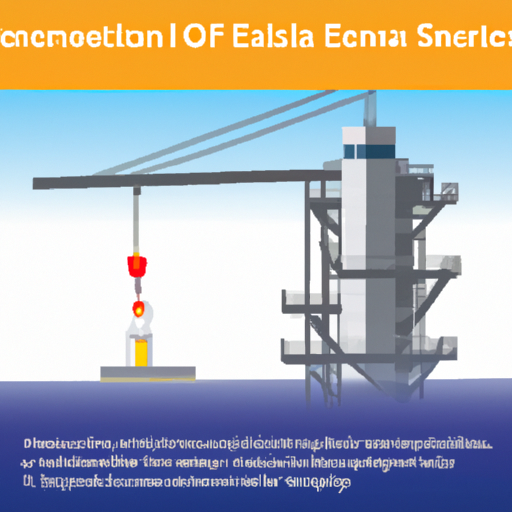The Essential Role of Oil Rig Elevators: Ensuring Safety and Efficiency in Offshore Operations

Introduction:
Oil rig elevators play a pivotal role in the oil and gas industry, specifically in offshore operations. These specialized elevators are designed to transport personnel and equipment between different levels of an oil rig, ensuring efficient and safe movement across vast structures situated in harsh marine environments. In this article, we will delve into the importance of oil rig elevators, their various types, safety features, and their contribution to enhancing productivity in offshore drilling operations.
1. The Significance of Oil Rig Elevators:
Oil rig elevators are an integral part of offshore drilling operations, where they facilitate the safe and efficient transportation of workers, machinery, and supplies between different levels of an oil rig. These elevators are responsible for vertically connecting the drilling deck, accommodation areas, storage facilities, and other critical sections of the rig. Without reliable elevators, offshore operations would be hindered, leading to significant delays and potential safety hazards.
2. Types of Oil Rig Elevators:
a. Personnel Elevators:
Designed to transport workers from one level to another, personnel elevators prioritize safety and efficiency. These elevators are equipped with advanced technology and adhere to stringent safety standards to ensure the well-being of personnel during transportation. They often feature multiple emergency stop buttons, interlocks, and backup power systems to mitigate risks in case of emergencies such as power failures or accidents.
b. Material/Equipment Elevators:
Material or equipment elevators are primarily used for transporting heavy machinery, tools, and supplies. These elevators are designed to withstand the weight and size of equipment used in offshore drilling, including pipes, drill bits, pumps, and other components. They are equipped with robust loading capacities, specialized lifting mechanisms, and secure locking systems to prevent accidents and protect valuable equipment.
c. Service Elevators:
Service elevators are dedicated to carrying out maintenance, repair, and inspection tasks. They are specifically designed to transport technicians, tools, spare parts, and other necessary equipment required for servicing various components of the oil rig. These elevators ensure convenient access to critical machinery, reducing downtime and maximizing operational efficiency.
3. Safety Features of Oil Rig Elevators:
Safety is of paramount importance in offshore drilling operations, and oil rig elevators incorporate several features to ensure personnel and equipment are transported securely and efficiently:
a. Emergency Stop Systems:
Oil rig elevators are equipped with multiple emergency stop buttons strategically placed throughout the elevator car and at each landing. These buttons immediately halt the elevator in case of any emergency, allowing personnel to respond quickly and efficiently.
b. Interlocks and Safety Gates:
To prevent accidents and unauthorized access, oil rig elevators are equipped with interlocks and safety gates that ensure the elevator doors are securely closed before the car begins moving. These safety measures prevent unintentional falls, guaranteeing the well-being of workers.
c. Backup Power Systems:
Considering the unpredictable nature of offshore operations, oil rig elevators are equipped with backup power systems, such as generators or batteries, to ensure uninterrupted functioning during power outages or emergencies. This feature enables safe evacuation during critical situations.
d. Overload Protection:
To prevent damage to the elevator and ensure the safety of personnel and equipment, modern oil rig elevators are equipped with sensors that detect excessive weight. If the elevator is overloaded, it will automatically stop and prevent further operation until the excess weight is removed.
4. Enhancing Productivity through Oil Rig Elevators:
Efficient transportation systems are essential for optimizing productivity in offshore drilling operations. Here's how oil rig elevators contribute to enhancing productivity:
a. Time-Saving:
Oil rig elevators significantly reduce the time required to move personnel, equipment, and supplies between different levels of the rig. Workers can quickly access their designated work areas, minimizing downtime and maximizing productivity.
b. Streamlined Operations:
By providing convenient and efficient access to critical areas of the rig, oil rig elevators streamline operations, allowing workers to focus on their tasks without spending excessive time navigating the structure manually. This contributes to improved efficiency and overall project timelines.
c. Reduced Physical Strain:
Manual transportation of heavy equipment and supplies on an oil rig can be physically demanding and time-consuming. Oil rig elevators eliminate the need for labor-intensive manual lifting and carrying, reducing physical strain on workers and minimizing the risk of injuries.
d. Enhanced Safety and Well-being:
The incorporation of advanced safety features in oil rig elevators ensures the well-being of personnel during transportation, reducing the risk of accidents, falls, or equipment damage. This promotes a safe working environment, boosting morale and productivity.
Conclusion:
Oil rig elevators are essential components of offshore drilling operations, providing safe and efficient transportation for personnel, equipment, and supplies across various levels of an oil rig. With their advanced safety features, such as emergency stop systems, interlocks, and backup power sources, these elevators contribute to a secure working environment. Moreover, they enhance productivity by saving time, streamlining operations, reducing physical strain, and ensuring the well-being of workers. As the oil and gas industry continues to evolve, oil rig elevators will remain a vital aspect of offshore operations, enabling efficient and safe exploration and extraction of valuable resources.




 8613371530291
8613371530291